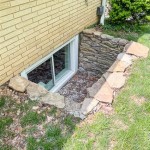Removing an Oil Tank from Your Basement: A Comprehensive Guide
If you're a homeowner with an oil tank in your basement, you may eventually need to have it removed. Oil tanks can leak, rust, and become a hazard to your home and health. Removing an oil tank can be a complex and expensive process, but it's important to do it safely and correctly.
Here are the essential aspects of removing an oil tank from your basement:
1. Hire a Qualified Professional
Removing an oil tank is a job best left to professionals. There are many companies that specialize in oil tank removal, and they have the experience and equipment to do the job safely and efficiently.
When hiring a contractor, be sure to get references and check their licensing and insurance. You should also get a written estimate for the work.
2. Prepare Your Home
Before the contractor arrives, you'll need to prepare your home for the removal process. This includes:
- Clearing a path from the basement to the outside
- Removing any furniture or other objects that could be in the way
- Covering your floors and furniture with plastic or drop cloths
3. Drain the Oil Tank
The first step in removing an oil tank is to drain it. This is done by pumping the oil out of the tank and into a tanker truck. The contractor will use a special pump to do this, and they will take precautions to prevent spills.
4. Remove the Oil Tank
Once the oil tank is drained, it can be removed from your basement. The contractor will use a crane or other heavy equipment to lift the tank out of the basement and onto a flatbed truck.
The contractor will then dispose of the oil tank according to local regulations.
5. Clean Up the Basement
After the oil tank has been removed, the contractor will clean up the basement. This includes removing any residual oil or debris, and disinfecting the area.
The contractor will also check for any leaks or other damage to your basement, and they will repair any damage that they find.
6. File a Claim with Your Insurance Company
If your oil tank leaked or caused damage to your home, you may be able to file a claim with your insurance company. Your insurance company will cover the cost of cleaning up the damage and replacing the oil tank.
Be sure to keep all of your receipts and documentation related to the oil tank removal process. This will help you when you file your insurance claim.
7. Get a Certificate of Removal
Once the oil tank has been removed and the basement has been cleaned up, the contractor will give you a certificate of removal. This certificate proves that the oil tank has been removed from your property and that the basement has been cleaned up according to local regulations.
You should keep the certificate of removal in a safe place. It may be required if you sell your home in the future.
Conclusion
Removing an oil tank from your basement can be a complex and expensive process, but it's important to do it safely and correctly. By following these essential steps, you can ensure that the oil tank is removed from your home without causing any damage or harm to your family.

Removing An Oil Tank From The Basement In All American Enviro

Basement Oil Tank Removal Tanks Removed Hudson Valley Ny

Indoor Basement Tank Removal Oil Exchange Program

Heating Oil Tank Removal Installation Suffolk County Swezey Fuel

Tank Removal Inground Basement

Oil Tank Removal Photos Home Heating Fuel

Aboveground Oil Tank Removal In Basement

Residential Oil Tank Removal In Hamilton Eco Metal Recycling Inc

Heating Oil Tank Removal Cast Iron Boiler Faq

Oil Tank Removal Meridian Environmental Services
Related Posts







